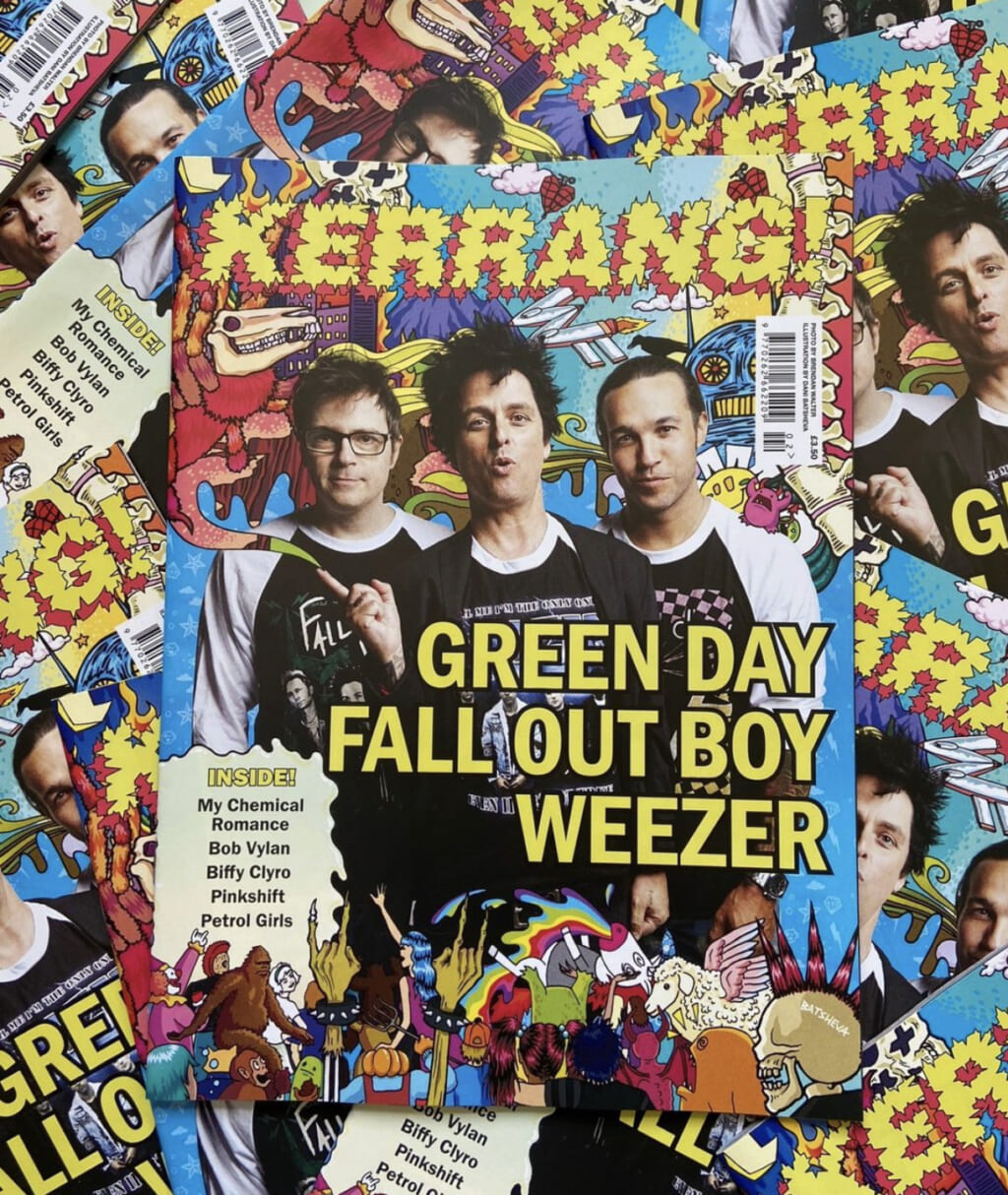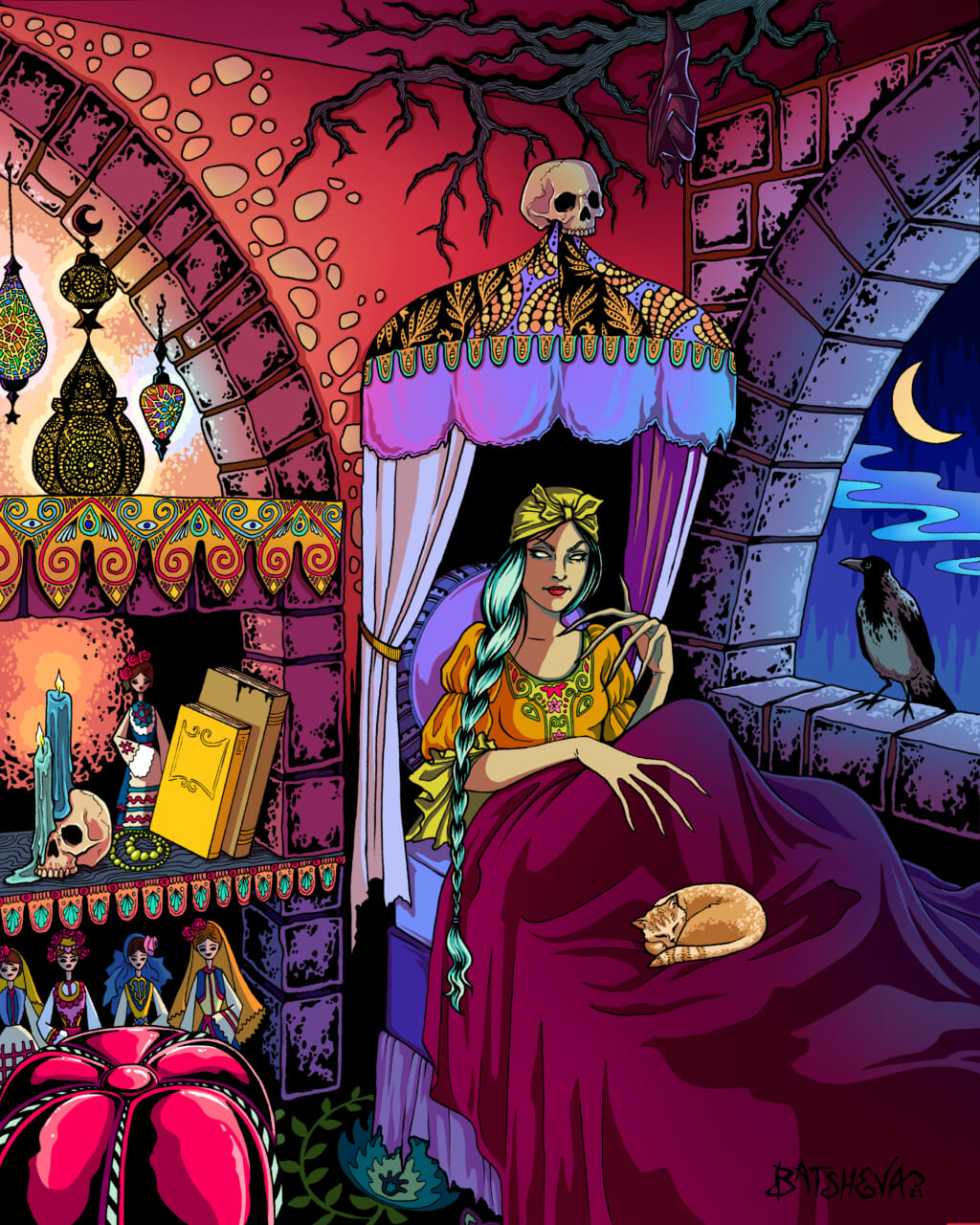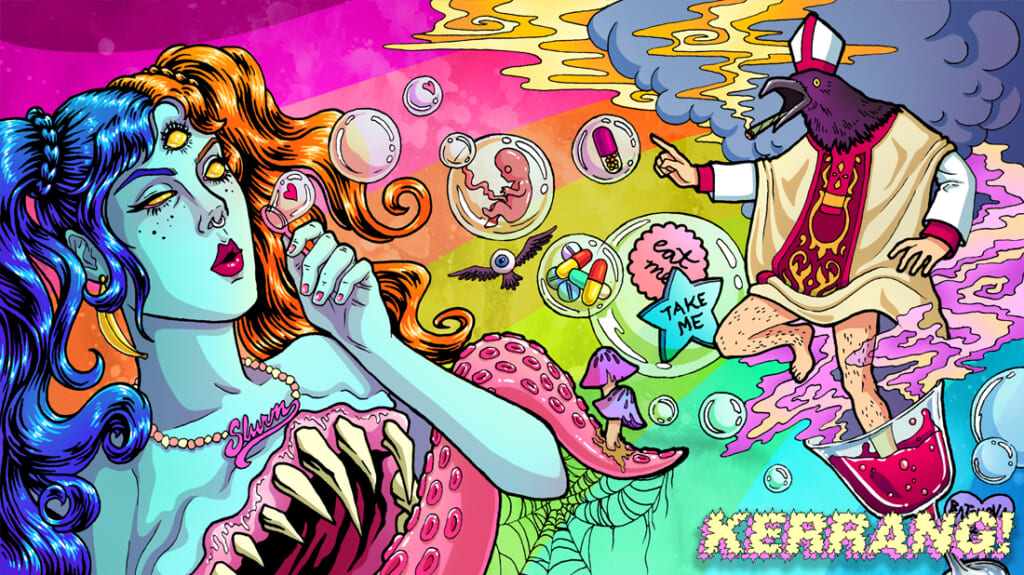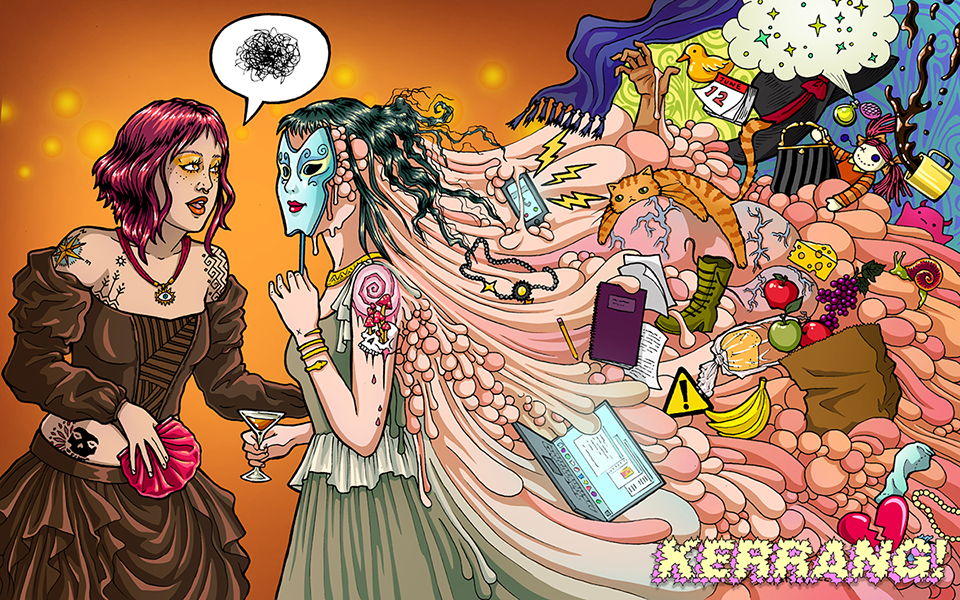Kerrang’s Lead Illustrator Daniella Batsheva Talks Her Biggest Horror Influences

The June 2022 issue of iconic magazine Kerrang! marks the first for lead illustrator Daniella Batsheva. Her work is full of minute details playing homage to horror movies, punk, and all this alt culture. And now it’s gracing the cover of Kerrang.
But it’s not just about the art for Batsheva; it’s about finding a community of women like her—Middle Eastern Jewish artists. She wants to carve a path that leads to more representation and acknowledgement of horror-loving Middle Eastern women.
We spoke with Bathsheva about her work with Kerrang!, Clive Barker, diversity in horror, and more.

Dread Central: So June was your first month as the lead illustrator [for Kerrang]. So to start off how did you get into art? <laugh>
Daniella Batsheva: I can’t really remember a day when I wasn’t drawing. So it was that early in my life when I started scribbling on things. There are stories about me scribbling on the walls. My earliest memory of really thinking about drawing was when I was around four or five and watching Tales From The Crypt.
DC: Ooh, cool.
DB: There’s just something about horror. That’s unlocked a lot of different things in me. It’s a major foundation in who I am as an artist,
DC: Tell me, how did you get introduced to horror?
DB: It’s actually a bit complicated because it kind of butts heads a bit with my cultural background. I’m Middle Eastern and Jewish, specifically Yemeni. There isn’t so much horror in that community. I was introduced to Halloween because I was growing up in the United States. To me, Halloween was the coolest thing I had ever seen in my life. My mother was very open-minded.
I was into it. I was consuming it. That was what actually watching [horror] films made me feel normal. And the rest of the time I kind of felt like a monster. This leads into what I’m trying to do with my personal work and with my work at Kerrang. I have not actually found another Middle Eastern Jewish person that creates illustrations representing that cultural background through the lens of the alternative and horror. So that’s what I’m trying to do.
DC: Hell yeah.
DB: Yeah. It’s a big thing and you know what, people don’t get it because most of the time I’m drawing for other people and that’s awesome. I’m having an impact. It feels great. But you know, when I put out my personal work, like Rahat. That’s one of my pieces where I’m trying to communicate my cultural background through the lens of horror and through my comfortable dark little world. To most people, they don’t get that. But to the people that do, to the Middle Eastern Jewish women that are out there that do get it, it means something to them. And so I haven’t had anyone really carve that path for me. So I’m trying to forge that path for myself, I guess, and hopefully other really weird Jewish or Arab women. <laugh>

DC: I love that though. That’s incredible. I mean, horror is so white.
DB: And it’s not even just horror. That’s been punk. It’s been goth, you know? Yeah. In all of the alternative scenes. The few times that I have seen Jewish rep representation in horror, it’s been Eastern European, which is still awesome. There’s so much happening there. And I’ll tell you what, I saw The Golem from 2018 and it just warmed my little heart. My friend was like, “okay, I wanna show you this cuz I know you haven’t seen it yet”. I sat down and watched it with her. There were points where I was like, I know this prayer, I know it. And it’s accurate. Then there was another part where the rabbi is impaled on a shofar and his guts go flying and I was laughing my ass off. It did Judaism justice. I was so excited about that. Now the goal is to just find or make a space for the Middle Eastern side of that.
DC: With your personal work, what kind of movies have really influenced your work and the style that you’ve developed? Your style is very bright and very full of detail. And they’re really gorgeous look at, cause I feel like the more you look at it, the more fucked up it becomes in a way. And I love that. And so I’m just curious, like, are there movies that you really pull from?
DB: On my style? Well, here’s the thing. Stylistically it hasn’t necessarily been from movies. The movies have been the fuel and the jumping-off point for me to express myself in a way that is entirely me. I would think that the closest thing to my influences from film would be something like the original Golem or Nosferatu. German expressionism. I love that. Older horror films make me really, really happy because I can just put it on and there’s always this white noise in the background and it just feels so fuzzy and warm. And it’s kind of like sitting there with an old friend. I’ve come to develop a kind of love for Nosferatu who arguably you could say was supposed to represent the Jewish problem. I have chosen instead to embrace Orlock and take that back. So I am very happy with this. <laugh>
DC: What are some artists that inspired you or continue to inspire you?
DB: Clive Barker and I’m not talking about Hellraiser, but his personal work. Oh my gosh, the colors, the style.
DC: I learned recently he was a painter and I’m obsessed with these works. They’re so terrifying. <laugh>
DB: Well, they’re terrifying, but there’s such a joy in it. I remember seeing his paintings for the first time when I was 13, 14, somewhere around there and it just stuck with me. But besides that, the other influences that I have are actually like early nineties animation, even older than that. I really like cell shading. Um, so a lot of people ask, “Why do you do cell shading?” And I’m say, “Dude, I like flat colors. I like shapes. I like them to be bright, too.
DC: Are you an anime fan?
DB: Not really. But I did grow up with Sailor Moon and that stuck with me.
It’s all of these things that kind of help shape who I am. I just saw Crimes of the Future and genuinely enjoyed that. Here’s the thing I turned to my friend after watching it and I said, “I don’t know if I’m smart enough for this.” And so I had to actually sit with it. I knew I loved the imagery, but I had to sit with what it meant to be a performance artist, what it meant to stay current, what it means to be a human in this world that’s moving forward without us. It was a really smart film.

DC: Ok, back to Kerrang! So how did you involved with the magazine?
DB: Recently, Kerrang! hired an awesome brand manager, Esme Surfleet. She’s a total creative genius. I ended up running into her because I run around a lot with the London crowd. She was interested in bringing back the visual art aspect of Kerrang! So Kerrang! did have, you know, comics and everything back in the 90s, early 00s. And at some point, it kind of faded. She thought this would be a really great opportunity to have an artist that’s coming from a different background; who’s also well versed in the alternative and can represent a wider group of people because the whole point of what they’re trying to do now is expand beyond just music and talk about different issues that affect people across different subcultures. So there are articles now on mental health, there are articles about film. There are articles about relationships, BDSM, all sorts of stuff. She trusted me with handling those topics with care. So I try to represent a wider group of people, but I also try to keep it humorous because I don’t want it to be too serious. I don’t want it to be scary. I still want to keep that fun feel that Kerrang has had. And I want people to look at it and just crack a smile.
DC: So what was that like to design this cover for the magazine?
DB: Well, this cover was so much fun. So they got the portraits in of the guys and they were thinking it would be really, really cool to try this collaborative illustrated photography type thing. And we were talking about it for a little bit and just for my own interest, I collected some reference photos about how to make photos and illustrations work in harmony. So maybe <laugh> maybe I could take a tarantula and put a unicorn skull over its head and have it firing lasers. Just anything ridiculous you could think of I threw in there. I even threw Bigfoot in there.
I was talking to everyone at the offices and I was like, do you have a request for who you want to see in the crowd? So <laugh>, it was a whole thing, but it was really fun to do. I like creating these chaotic full images where you kind of have to find the little details and the characters in there. And I was going to do some more work internally, but like halfway through creating that cover, I actually got COVID.
Somehow I managed to finish that cover with like COVID and I felt like every time I was phoning into the offices, I had no makeup on, I was a mess. I was in my jams. I’m like, what do you need though?
DC: When they took the photos, they had it in mind that you were gonna illustrate it. How did that collaboration work?
DB: As far as I know, the photographer did this separately and was tasked with just getting their portraits.
The guys did whatever motions they felt like doing. And I was sent the entire set of photos. I actually Frankensteined that photo. I took my favorite faces and my favorite positions and I put it all together and mixed it up.
DC: I’m looking back at some of the illustrations that are in the June issue. Your burnout piece is incredible. How long does take you onceptualizing to creating, which probably changes per piece.
DB: That one, I started at seven in the morning and I ended at 5:00 PM for the burnout one.

DC: Wow. That’s actually less time than I thought.
DB: Well, you know, the thing is once you get into the cycle of doing this and you kind of develop your own style, you don’t have to think so much about what to do. Because for me, especially with the burnout one, it came to me very easily because I know that feeling so well. And I, and so many of my friends have that feeling where it’s like you’re putting on the mask, you’re going out, but you are absolutely dragging yourself and your entire life with you. It feels heavy.
DC: I’m just curious, what are some of your favorite movies like horror movies of all time?
DB: Of all time? Dolls. That is my movie. I have a really soft spot for killer doll movies. So I’m also a really big Puppet Master person, too. I’m just like a little bit of a fan of Charles Band. I think he’s really cool. <laugh> And of course Chucky.
The thing that, you know, set Dolls apart for me was just the use of the vintage and Victorian dolls and doctoring them to have their little like little teeth and the stop motion animation like that does it for me.
Categorized:Interviews News
